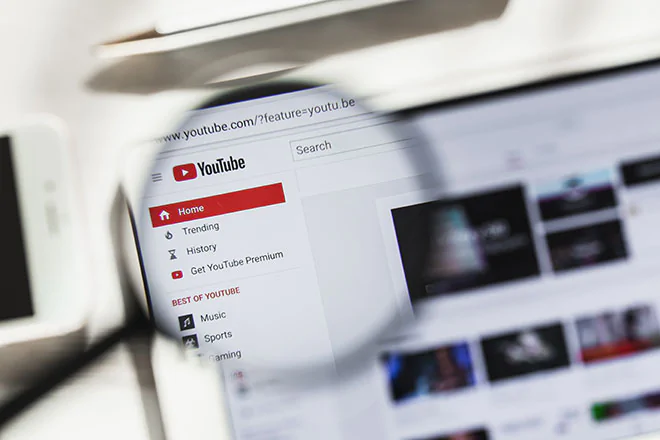How to Optimize YouTube Videos for Better Search Rankings in 2024
YouTube will still be a major player in the digital space in 2024, so businesses and content creators need to optimize their videos for search engines to rank higher. Doing so will increase visibility, drive more views, and eventually increase engagement and conversions.
1. Conduct Thorough Keyword Research
Keyword Research Tools: Focus on keywords pertaining to your sector or area and use tools like Ahrefs, TubeBuddy, and Google Keyword Planner to find high search volume and low competition phrases.
Long-Tail Keywords: Include less competitive and more specialized long-tail keywords. These terms frequently draw in a more specialized readership.
Competitor Analysis: Examine the keywords that popular videos in your niche are focusing on by analyzing them. This might provide you ideas for content-related keywords that work well.

2. Create an Engaging Title
Incorporate Keywords: Make sure the title includes your main keyword early on to increase searchability and relevancy.
Keep It Compelling: Write a catchy title that will entice readers to click. A well-crafted title has a major effect on the click-through rate (CTR) of your video.
Title Length: To guarantee that your title appears completely in search results, try to keep it to no more than 60 characters.
3. Optimize Videos Descriptions
Include Keywords: Naturally place your primary keywords in the opening one or two phrases of your description. This facilitates YouTube’s comprehension of your video’s content.
Provide Value: Provide a thorough explanation that helps readers understand what to expect. To promote interaction, provide time stamps, important points, and a call to action (CTA).
Add Links: To provide more value and increase traffic, including connections to your website, relevant videos, and social media accounts.
4. Utilize Tags Wisely
Relevant Tags: To increase the discoverability of your movie, use a combination of general and targeted tags. Incorporate synonyms and variations of your primary keywords.
Tag Limit: YouTube lets you tag videos with up to 500 characters. Make good use of this area, but don’t pack it too full.
Tag Order: To guarantee that YouTube’s algorithm gives your most significant tags greater weight, place them at the top.
5. Design an Eye-Catching Thumbnail
Visual Appeal: Make a visually stunning, high-quality thumbnail that faithfully captures the essence of the film. Make use of high-resolution photos, contrasting colors, and bold text.
Consistency: Keep your thumbnails all the same in order to establish brand awareness and draw in repeat visitors.
Testing: Try out various thumbnail styles to see which ones your audience responds to the most.
6. Optimize Video for Engagement
Video Length: Choose a video duration that is informative without being unduly drawn out. According to research, videos that last seven to fifteen minutes usually do well.
Watch Time: Provide captivating information that will captivate viewers through to the very end. Extended viewing durations indicate to YouTube the worth of your content.
CTAs: To promote likes, comments, shares, and subscriptions, include obvious calls to action (CTAs) in both your video and description. Interacting with your viewers raises the rating of your video.

7. Leverage Closed Captions and Subtitles
Accuracy: To make your work accessible to a larger audience, including people who are deaf or hard of hearing, add correct closed captions.
SEO Benefits: Because closed captions give YouTube’s system more text to index, they can enhance SEO.
Multiple Languages: To reach an international audience, think about including subtitles in various languages.
8. Promote Your Video Across Channels
Social Media: Post your video on social media sites to boost exposure and traffic.
Email Marketing: To engage your current audience and draw in new ones, include your video in email newsletters.
Collaborations: Collaborate with fellow content producers or influencers to extend the impact of your work through cross-promotion.
9. Analyze Performance and Adapt
YouTube Analytics: To monitor performance data like watch time, traffic sources, and audience demographics, regularly evaluate your YouTube Analytics.
Adjust Strategies: Utilize the information gleaned from your analytics to improve your optimization tactics. Try out various strategies to find the one that resonates most with your audience.
A/B Testing: Try different elements, like descriptions, thumbnails, and titles, to see which combinations work best.

Conclusion
In 2024, optimizing YouTube videos for higher search engine ranks will require a multifaceted strategy that includes thorough description writing, captivating titles, keyword research, and interesting content. By putting these tactics into practice and keeping an eye on performance, you can increase the visibility of your video, draw in more viewers, and succeed more on the platform. Keep abreast of industry developments and modifications to YouTube’s algorithm to guarantee that your optimization efforts stay pertinent and successful.
FAQs
1. Why is optimizing YouTube videos important for search rankings?
YouTube videos can be made more visible and rank higher in Google and YouTube search results by optimizing them. When your videos are properly optimized, visitors who are looking for related material are more likely to find them, which increases the number of views and interaction.
2. How important are video titles for SEO?
Since YouTube considers video titles as one of the key variables to determine the content of your video, video titles are very important for SEO. Your video’s chances of showing up in search results can be greatly increased with a well-written title that includes pertinent keywords.
3. What role do video descriptions play in search optimization?
Video descriptions give your video context and details. Adding pertinent keywords and phrases to your description increases the likelihood that YouTube will recognize the topic of your video and helps it appear higher in search results.
4. How can I choose the best keywords for my video?
To locate appropriate keywords, utilize keyword research tools such as Ahrefs or SEMrush, as well as YouTube’s search suggestion feature. Pay attention to keywords that are both highly searched and relevant to your content.
5. How do tags affect video SEO?
Adding tags to your video aids YouTube in comprehending its context and substance. You may increase the discoverability of your video and make sure it shows up in related video recommendations by utilizing relevant tags.
6. What makes an effective video thumbnail?
A good video thumbnail should be eye-catching, well-made, and pertinent to the content. It should have text overlays or graphics that draw viewers in and clearly communicate the content of the film.
7. Why are captions and subtitles important for SEO?
Your video’s searchability is increased when it has captions and subtitles since they allow it to be viewed by more people and are indexable by search engines. They also improve user interaction and experience.
8. How does video engagement impact search rankings?
Increased watch time, likes, comments, and shares are examples of engagement metrics that show how beneficial your video is to viewers. These indicators tell YouTube that it’s worthwhile to promote your video, which can raise its position in the search results.







